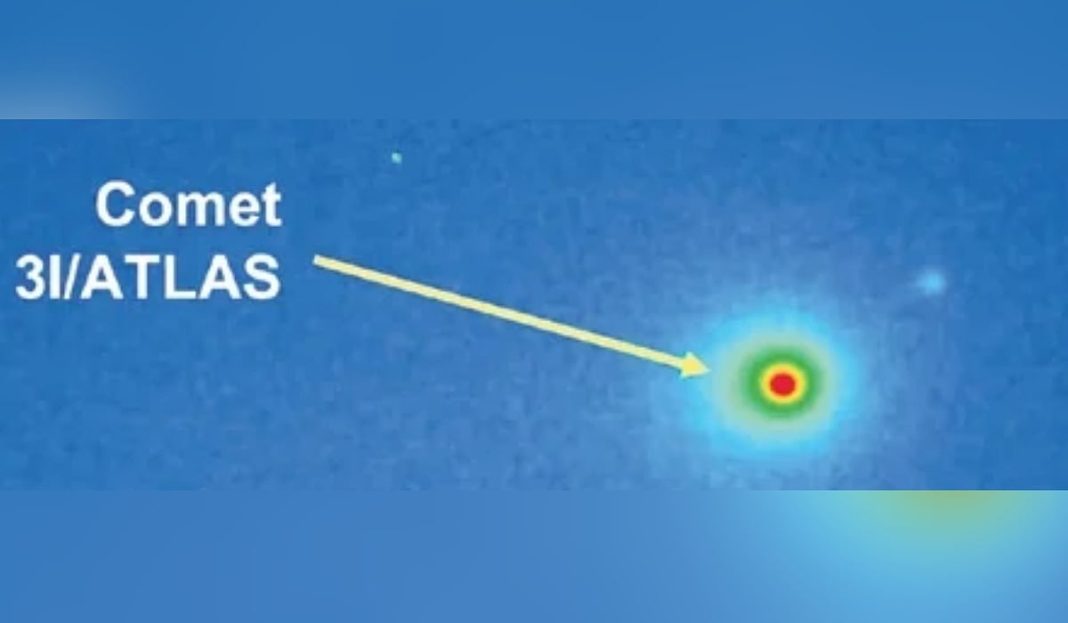In the vast cosmic ballet, comets stand as enigmatic messengers, relics from the dawn of our solar system, or even, occasionally, wanderers from beyond. These icy voyagers carry invaluable clues about the universe’s primordial soup and the conditions that fostered planetary formation. India, through the dedicated efforts of scientists at ISRO’s Physical Research Laboratory (PRL) in Ahmedabad, is playing a crucial role in deciphering these celestial time capsules. Their latest focus? The intriguing comet 3I/Atlas, an object that has captured the attention of astronomers worldwide.
The study of comets at PRL represents a cornerstone of India’s contribution to planetary science and astrophysics. With state-of-the-art facilities and a legacy of pioneering research, PRL scientists are meticulously analysing data from comet 3I/Atlas, aiming to unlock its secrets and deepen our understanding of these transient celestial bodies. This endeavour not only reinforces India’s capabilities in cutting-edge space research but also adds a unique Indian perspective to global astronomical pursuits.
Unveiling Comet 3I/Atlas: A Visitor from Afar
Comet 3I/Atlas is not just any comet; its designation “3I” points to a particularly significant category: the third identified
PRL scientists are employing a suite of observational techniques and analytical models to scrutinize 3I/Atlas. Using advanced telescopes and spectroscopic instruments, they are gathering data on its chemical composition, volatile content, and physical characteristics. The analysis aims to determine the types of ices and dust particles present in its coma and tail, which can reveal its formation environment. For instance, the presence of certain complex organic molecules could offer insights into the prevalence of pre-biotic chemistry in other stellar nurseries.
“Studying an interstellar comet like 3I/Atlas is akin to receiving a geological sample from an alien world,” remarks Dr. Vikram Sharma, a senior scientist at PRL involved in the comet study. “It provides us with an unparalleled opportunity to compare its composition with objects formed within our own solar system, offering crucial data points for understanding the diversity of planetary systems across the cosmos. Every spectral line, every light curve, tells a story of its distant origin.”
The distinctive trajectory and unexpected behaviour of 3I/Atlas have also been areas of intense investigation. Its speed and hyperbolic path confirm its non-solar system origin, making its analysis even more critical. PRL’s expertise in modelling celestial mechanics and astrophysical phenomena provides a strong foundation for interpreting the dynamic evolution of such an elusive object.
PRL’s Legacy in Cometary and Planetary Science
The Physical Research Laboratory boasts a rich history in space and atmospheric sciences, with a particularly strong emphasis on planetary and cometary research. Established as a premier institution under the Department of Space, PRL has been instrumental in several ISRO missions, contributing scientific payloads and analysis. Its scientists have a long-standing tradition of observing comets, tracking meteor showers, and studying the fundamental properties of our solar system.
The current focus on 3I/Atlas is a natural extension of PRL’s sustained efforts to understand the origins and evolution of the solar system. Previous research includes studies of various comets, analysis of lunar samples from Chandrayaan missions, and investigations into Martian geology. This wealth of experience and infrastructure, including access to world-class observatories like the Udaipur Solar Observatory and facilities for laboratory astrophysics, positions PRL uniquely to tackle the complexities presented by an interstellar visitor.
Furthermore, PRL’s work on 3I/Atlas is not conducted in isolation. It forms part of a broader global effort to understand these unique objects, contributing valuable Indian data and interpretations to the international scientific community. Such collaborative research underscores India’s growing stature in space exploration and astronomical discovery.
Looking Ahead: The Promise of Future Discoveries
The study of comet 3I/Atlas by ISRO’s PRL scientists represents more than just a fleeting astronomical observation; it is a profound scientific endeavour with far-reaching implications. By meticulously analysing the composition and characteristics of an object that formed outside our solar neighbourhood, researchers are directly addressing fundamental questions about the universality of planetary formation processes and the distribution of organic matter in the galaxy.
As India continues to expand its footprint in space, with ambitious missions like Aditya-L1 and future planetary explorations, the insights gained from studies like that of 3I/Atlas will prove invaluable. They contribute to a deeper scientific understanding of the cosmos, inspire future generations of Indian scientists, and solidify India’s position as a significant player in the global pursuit of knowledge. The cosmic dance continues, and India, through institutions like PRL, is taking centre stage in understanding its intricate choreography.
*




